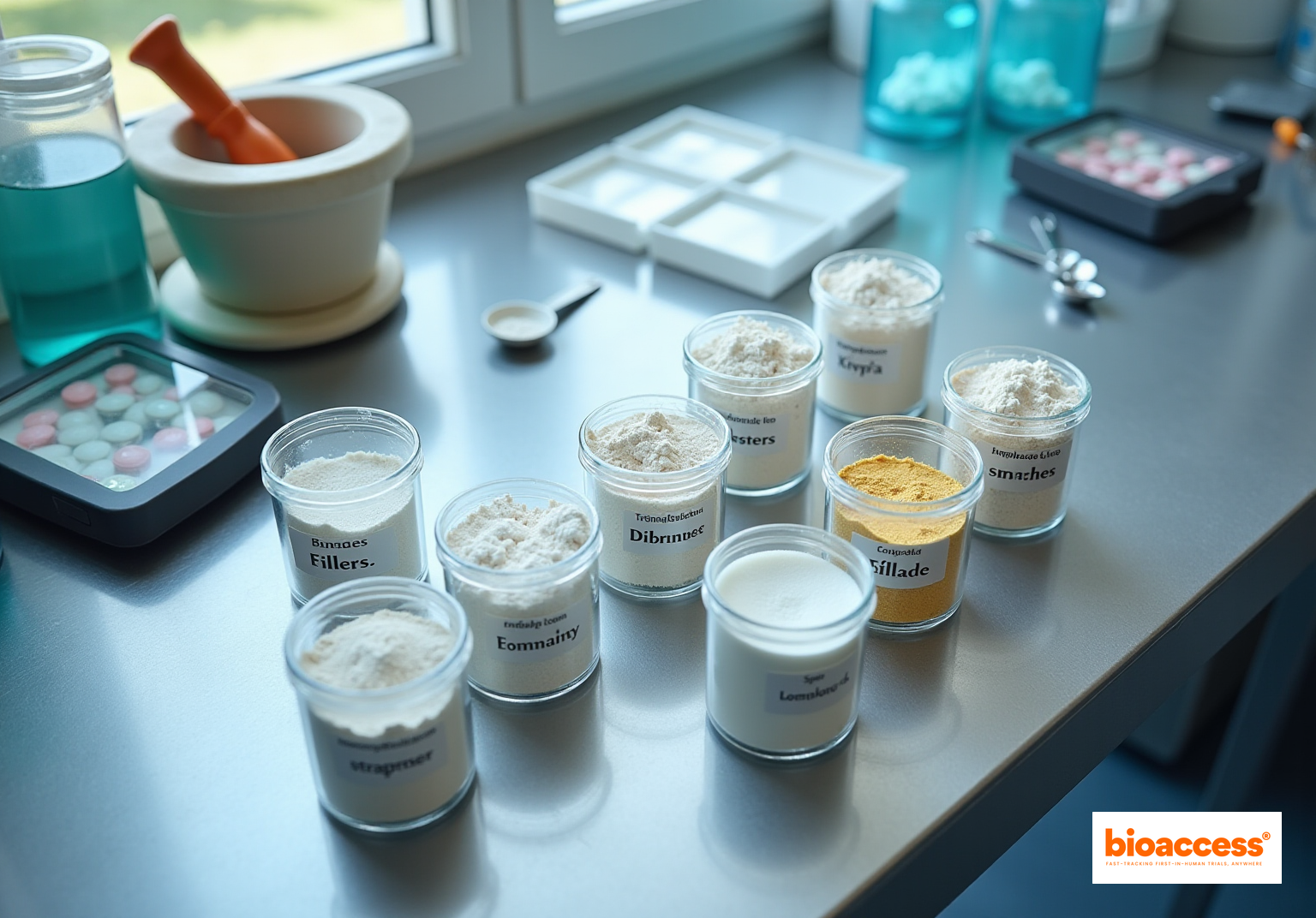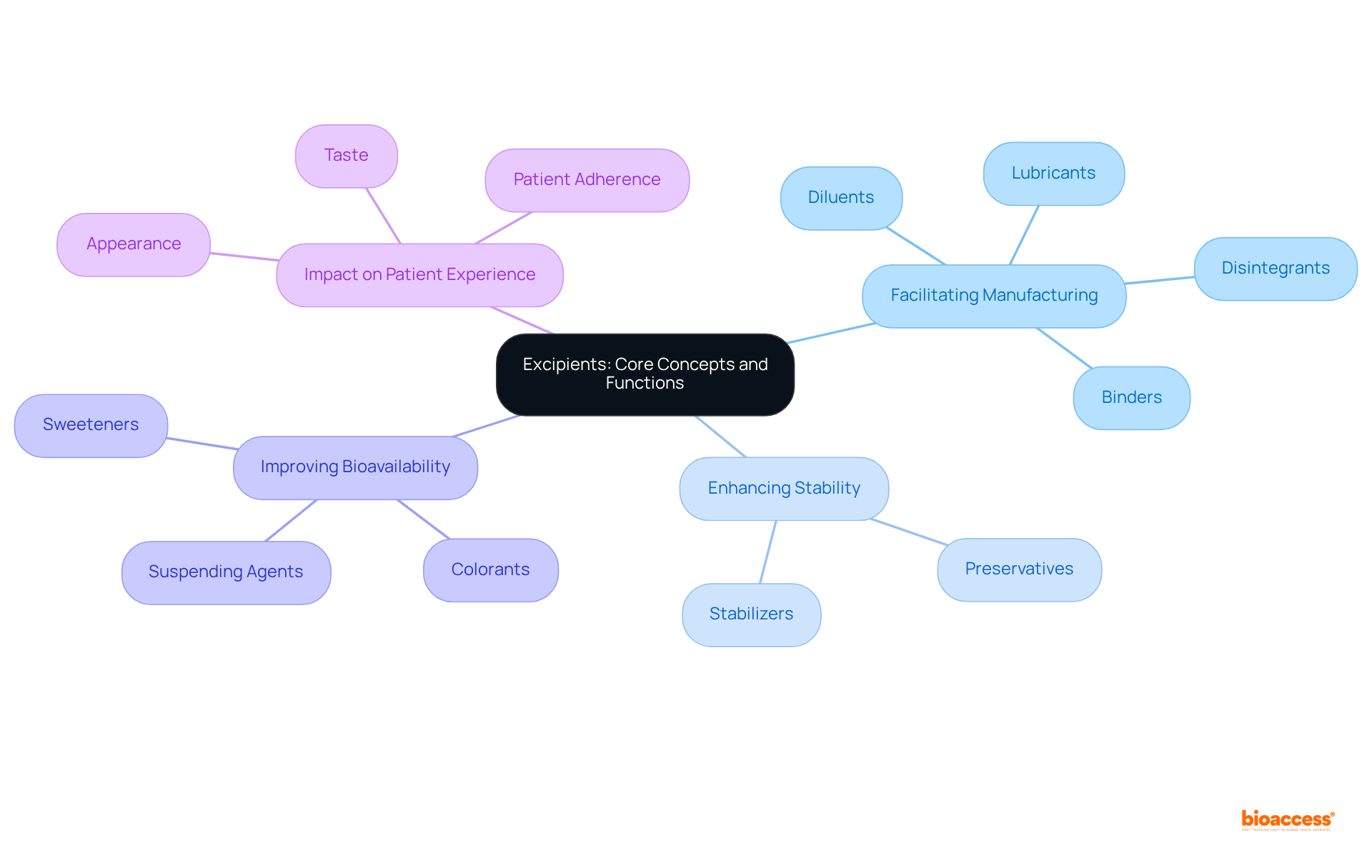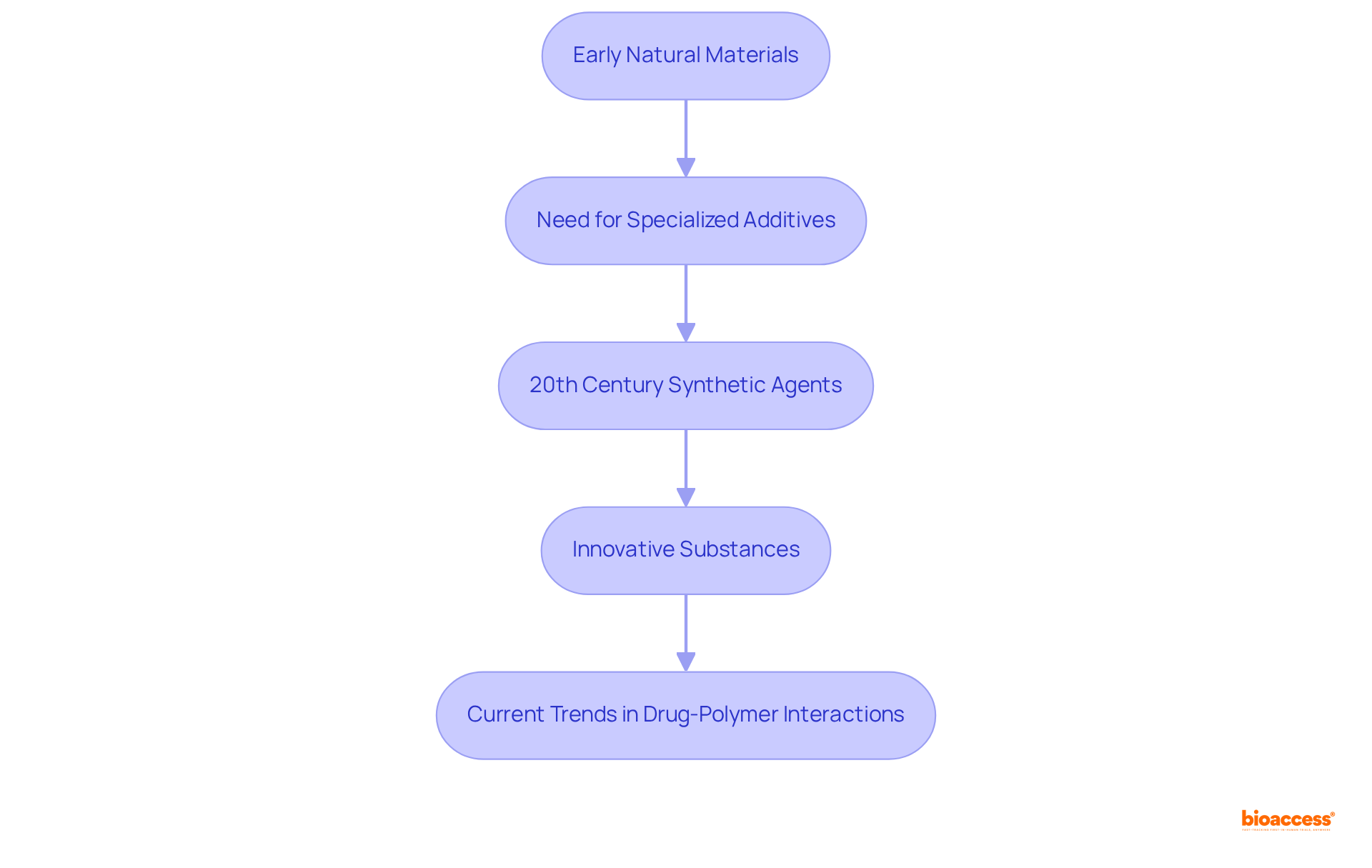


Excipients serve as crucial inactive ingredients in pharmaceuticals, playing a vital role in the manufacturing process, enhancing stability, and improving the bioavailability of active pharmaceutical ingredients (APIs). Their various functions include:
This underscores the necessity of their careful selection, which is essential for optimizing drug performance and ensuring patient satisfaction.
Understanding the intricate world of pharmaceuticals reveals a critical backbone: excipients. These inactive ingredients, often overlooked, play essential roles in enhancing the stability, bioavailability, and overall effectiveness of medications. As the pharmaceutical landscape evolves, the significance of excipients becomes increasingly apparent, prompting a crucial inquiry: how do these seemingly minor components influence the efficacy and acceptance of life-saving drugs? Exploring this topic uncovers the vital functions and innovations that will define the future of drug formulation.
The definition excipient identifies critical materials that are distinct from the active pharmaceutical component (API) and are incorporated into formulations. Their essential functions include:
Furthermore, excipients can significantly impact the product's appearance, taste, and overall patient adherence. Understanding the definition excipient of these inactive ingredients is vital, as they are present in nearly all commercial medications, ensuring that the final product is not only safe and effective but also satisfactory for patients.

The background of additives in pharmaceuticals spans centuries, commencing with early formulations that utilized natural materials such as sugars and starches. As pharmaceutical science progressed, the necessity for more specialized additives became apparent. The 20th century marked a pivotal transformation with the advent of synthetic agents, revolutionizing formulation by providing enhanced control over delivery and stability. This evolution has led to the development of innovative substances tailored to meet specific therapeutic needs, including targeted delivery systems and improved solubility.
For instance, research has shown that the solubility of poorly water-soluble compounds, such as Azithromycin, can be significantly enhanced through solid dispersion methods using synthetic additives like Kolliphor P 237, which elevated solubility from 85 to 753 μg mL−1. Furthermore, the solubility of Hesperidin was also improved with Mannitol and PVP, underscoring the effectiveness of synthetic additives.
The continuous innovation in excipient development, as per the definition excipient, remains vital for optimizing drug performance and addressing the distinct challenges posed by the rapidly growing biologics market, which is projected to expand at a compound annual growth rate of 15% until 2027. Additionally, understanding drug-polymer interactions is essential, as these interactions significantly influence the efficacy of the definition excipient used in mixtures.
In this context, bioaccess®'s expertise in early-phase clinical research is critical, facilitating the development of these innovative products to ensure they meet the rigorous demands of modern therapeutics.

The definition excipient refers to vital elements in medication preparation and distribution, significantly impacting the stability and bioavailability of active pharmaceutical compounds (APIs). They fulfill various roles, including acting as binders, fillers, disintegrants, and lubricants, each specifically designed to enhance the manufacturing process. For instance, binders are essential for maintaining the integrity of the formulation, while disintegrants facilitate the breakdown of tablets in the digestive tract, ensuring effective release of the active ingredient.
The selection of additives is particularly crucial for improving the solubility of poorly soluble compounds, which account for approximately 60% of active pharmaceutical ingredients in development. This enhancement directly affects medication absorption rates and therapeutic effectiveness. Notably, innovative additives such as Apisolex™, a non-toxic and biocompatible polymer, have demonstrated the ability to enhance the solubility of hydrophobic active pharmaceutical ingredients by as much as 50,000-fold, underscoring their potential to transform formulations.
Moreover, additives can improve the pharmacokinetic characteristics of medications, enabling sustained release and targeted delivery. For example, Capsugel® Enprotect™ capsules are engineered to safeguard acid-sensitive APIs during stomach transit, releasing them exclusively in the intestine, thus enhancing bioavailability. These capsules streamline the drug product manufacturing process by removing the necessity for additional coating or sealing. The meticulous selection and preparation of excipients, according to the definition excipient, are essential for achieving desired pharmacological outcomes, emphasizing their critical role in the pharmaceutical sector.

The definition of excipient refers to essential components in pharmaceutical formulations, which are classified into several categories based on their functions.
Binders are crucial for maintaining the integrity of tablets and capsules, ensuring they hold their shape during storage and use. Typical instances encompass microcrystalline cellulose and pregelatinized starch, which improve the adhesion among particles, aiding in the overall stability of the mixture. Notably, binders accounted for the largest market share of 12.98% in 2022, underscoring their significance in drug development.
Fillers (Diluents) enhance the volume of the formulation, enabling precise measurement of strong active substances. Commonly used fillers such as lactose monohydrate and microcrystalline cellulose guarantee uniformity in dosage, especially when the active component is present in small amounts.
Disintegrants play a vital role in aiding the breakdown of tablets within the gastrointestinal tract, enhancing the release of active components for absorption. Effective disintegrants like sodium starch glycolate and croscarmellose sodium significantly improve drug release, thus enhancing bioavailability and therapeutic efficacy. Their role is critical, as they directly impact the effectiveness of medications.
Lubricants, such as magnesium stearate, minimize friction during the manufacturing process, ensuring smooth tablet compression and preventing materials from sticking to equipment. This is vital for maintaining production quality and efficiency.
Preservatives, including parabens and benzalkonium chloride, are essential for preventing microbial growth in formulations, significantly extending shelf life and ensuring product safety.
Coating Agents enhance the appearance and swallowability of tablets while also protecting active ingredients from degradation. Hydroxypropyl methylcellulose is a popular choice, enhancing both stability and patient compliance. The market for coating agents is projected to grow significantly due to their essential role in enhancing targeted drug delivery and bioavailability.
According to the definition of excipient, each type of excipient plays a vital role in ensuring the safety, efficacy, and acceptability of pharmaceutical products, contributing to their overall effectiveness in patient care. As noted by Brian Moore, VP of NICCA USA, Inc., "The quality of research they have done for us has been excellent," highlighting the importance of high-quality excipients in pharmaceutical formulations.

Excipients are indispensable components within the pharmaceutical industry, enhancing the formulation, stability, and bioavailability of medications. Although these ingredients are inactive and not the active pharmaceutical ingredients, they are crucial for ensuring that drugs are safe, effective, and patient-friendly. Understanding the definition of excipients allows for a deeper appreciation of their multifaceted contributions to drug development and delivery.
The evolution of excipients from natural to synthetic materials reveals their increasing sophistication in addressing specific therapeutic needs. The diverse categories of excipients, including binders, fillers, disintegrants, and lubricants, each fulfill unique functions that collectively optimize drug performance. Furthermore, advancements in excipient technology, such as innovative polymers and targeted delivery systems, underscore their importance in enhancing drug solubility and efficacy.
Recognizing the significance of excipients is vital for all stakeholders in the pharmaceutical sector, from researchers to healthcare professionals. As the industry continues to innovate and adapt, the exploration of excipients remains paramount in overcoming the challenges of modern therapeutics. Embracing this knowledge not only fosters improved drug formulation practices but also ultimately contributes to enhanced patient outcomes and satisfaction.
What are excipients in pharmaceuticals?
Excipients are critical materials that are distinct from the active pharmaceutical ingredient (API) and are incorporated into formulations.
What are the essential functions of excipients?
The essential functions of excipients include facilitating the manufacturing process, enhancing stability, and improving the bioavailability of the active ingredient.
How do excipients affect the final pharmaceutical product?
Excipients can significantly impact the product's appearance, taste, and overall patient adherence, ensuring that the final product is safe, effective, and satisfactory for patients.
Are excipients present in all medications?
Yes, excipients are present in nearly all commercial medications.